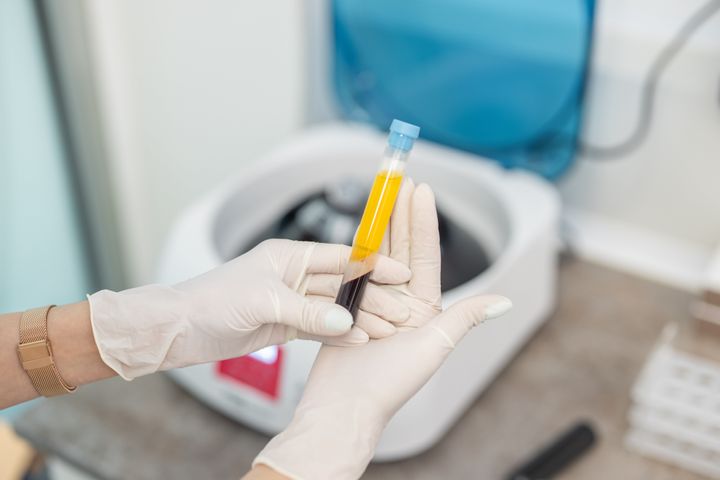Fertility treatments are intimidating. Most of us are used to taking medicine in the form of a pill with a simple gulp of water, so moving into a world of syringes, needle sticks and vaginal probe ultrasounds — which may be happening on a daily basis around the time you ovulate — can leave you feeling more like a science experiment than a parent-to-be.
You might think that emotionally drained fertility patients would turn down any medical treatment that isn’t deemed essential. But many of us lurch toward them, asking our doctors and any other providers who will listen to offer us anything that might increase our odds of success, even marginally.
Fertility patients routinely turn to acupuncture, herbal medicine, massage, mindfulness and other treatment modalities in spite of mixed or sparse evidence of their effectiveness. If a suggested treatment won’t cause harm and there’s even a small chance it might help, patients feel compelled to give it a try. There’s an impulse to leave no stone unturned, particularly when insurance caps or finances limit the number of IVF cycles you can pursue.
In recent years, platelet-rich plasma (PRP) has been added to the list of adjacent therapies that some patients seek in hopes of increasing their odds of success with IVF.
What is platelet-rich plasma treatment?
PRP treatment takes a small amount of the patient’s own blood — drawn in the same manner as for a laboratory test — and spins it at high speed in a centrifuge. This separates the different components of the blood, yielding a portion of plasma (the liquid part of your blood) with a very high concentration of platelets.
We typically associate platelets with clotting, but they are also part of the body’s repair system and integral to healing injuries. Because PRP is derived from your own blood, it carries a lower risk than other elective treatments such as medications or surgeries.
What is PRP used to treat?
PRP did not originate as a fertility treatment, and, at present, it is only offered by some fertility clinics.
“Actually it’s been used in dermatology, plastic surgery, orthopedics and only recently has it began to be trialed in fertility treatments,” Dr. Molly Quinn, a reproductive endocrinologist at HRC Fertility in California, told HuffPost.
Orthopedists, for example, may offer a series of PRP injections to facilitate the healing of a rotator cuff or ACL injury, or following surgery. PRP has also been used to promote hair growth, and with hair transplant treatments.
As for treating infertility, doctors have tried injecting PRP in two different locations, usually either preceding or during an IVF cycle. First, into the uterus, to support the growth of the endometrial lining and make it more receptive to the implantation of an embryo; and second, into the ovaries, to support the development of more healthy follicles capable of producing eggs that can eventually be fertilized to produce healthy embryos.
If you have had previous failed or canceled IVF cycles that your doctor believes were due to insufficient endometrial growth (the lining of your uterus did not grow thick enough) or poor response to follicle-stimulating medications (your ovaries did not produce very many eggs), some fertility doctors may suggest PRP.
When injected into the ovaries, PRP is given in the months preceding IVF treatment. When injected into the uterus, PRP is given during the course of IVF treatment, often shortly before an embryo is transferred into the uterus.
Because PRP is considered an experimental treatment for infertility, you might be eligible to participate in a clinical trial. Otherwise, the procedure would not likely be covered by your insurance, costing you anywhere from $300 to $1,600 out of pocket.
Do we know if PRP is effective?
“There are studies of [the] use of platelet-rich plasma in both locations that have been published, but they’re pretty minimal,” Quinn said. The fertility clinic she works at does not currently provide the treatment.
Because evidence that PRP is effective is lacking, “I wouldn’t offer it to patients outside of an IRB-approved investigational study,” she said.
Dr. Jason Franasiak, a reproductive endocrinologist at RMA New Jersey, said that a lot of the studies involving PRP have not been randomized controlled trials, known as the gold standard in scientific research. His clinic, however, completed a “randomized control trial for intra-ovarian injection of PRP … in patients who are young that have poor ovarian response.”
The trial was designed to test whether “the use of PRP for ovarian injection might restore some of their ovarian function.”
“Unfortunately, the results of that trial showed that there was no improvement in the number of mature eggs or chromosomally normal embryos that were resulting from PRP injection inside of the ovary,” Franasiak said.
Because there does not seem to be a benefit, and because transvaginal injections into the ovaries are an invasive procedure, his clinic is not currently offering this treatment to patients. They are, however, working on a study of “intrauterine PRP for endometrial insufficiency,” said Franasiak.
“We actually presently have a double-blind randomized controlled trial that is ongoing and enrolling. And what we’re looking at is patients that have had a embryo transfer cycle that’s been canceled because of a thin uterine lining.”
Once the results of that clinical trial and others have been published, we will know more about which patients, if any, might be helped by PRP treatment.
Is “ovarian rejuvenation” possible?
If you go searching online for information regarding PRP, you will find multiple clinics using the phrase “ovarian rejuvenation,” implying that PRP can make your eggs younger.
Females are born with all of the oocytes (egg cells) that they will ever have. Unless you’re using a donor egg or thawing frozen eggs, your eggs can only be the same age that you are.
“I don’t think ovarian rejuvenation is something that we can really achieve,” Quinn said.
Unfortunately, older eggs are less likely to result in pregnancy, and these pregnancies are more likely to end in miscarriage. However, there is no one, predictable age at which fertility will end — everyone’s body is different. We know that, in general, a woman’s fertility declines after age 35 (but this also varies). By considering your blood test results and the results of any previous treatments you have done, your doctor can help you come up with an individualized treatment plan. In some cases, this may involve donor eggs and/or surrogacy.
“Fertility patients are vulnerable,” Quinn said. “And it is also unfortunate that fertility treatment has really become a big business. Because I think the resulting byproduct is that things come down the pipeline [and] patients get offered treatments that really haven’t been trialed adequately.”
She continued, “patients may not realize how little data there are to support whatever intervention it is that’s being offered.”
Doctors often tell patients that they can pursue complementary treatments such as acupuncture or vitamin supplements, which are seen as very low risk, even if they don’t believe them to be effective. With PRP injection into the ovaries, however, Quinn said she would want to see data regarding the risk of infection before recommending that treatment to her patients.
If IVF isn’t working, what are my options?
If you’ve had a failed or canceled IVF cycle, your doctor may change the medications used in a future cycle based on your past results. Endometrial growth can be stimulated with estrogen supplementation, which is often one of the medications given during an IVF cycle.
Quinn said it’s important to acknowledge that “the thickness of a uterine lining is not entirely predictive of whether or not somebody is going to meet success.” Scar tissue or certain medical conditions might cause issues with the lining that impact fertility. However, for a “majority of cases where an embryo transfer is not successful, it is usually a reflection of an unhealthy embryo,” she said.
“The greatest predictor for success is the embryo quality,” Quinn said. Preimplantation testing can help determine “whether or not an embryo is predicted to be genetically balanced,” but she noted that such testing is “imperfect.”
“So [genetic testing] alone probably isn’t going to guarantee success,” she explained. Another determinant of embryo quality is how old someone is when they provide the eggs used to create the embryos. This doesn’t mean that eggs from an older patient won’t ever become high-quality embryos, only that it is less likely than with eggs from a younger patient.
While we often see celebrities having babies well into their 40s, we do not know how many of them used donor eggs to achieve their pregnancies. The CDC has an IVF success estimator tool that you can use to predict your own odds of having a baby with your own or donor eggs.


